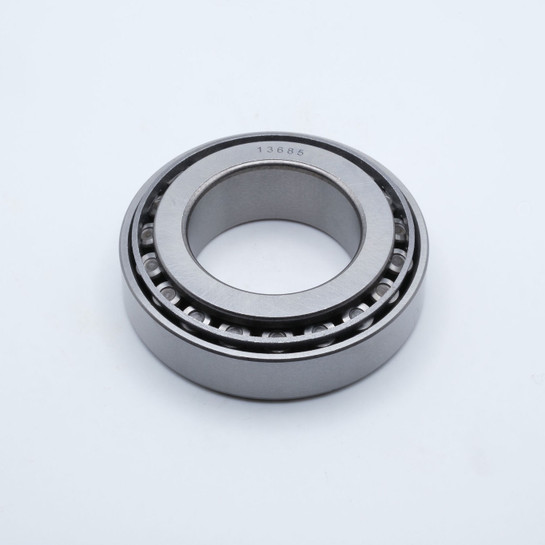Tapered roller bearings are a type of rolling-element bearing that is commonly used in industrial applications. These bearings are capable of supporting high radial and axial loads and are designed to handle both thrust and radial forces simultaneously. In this blog post, we will provide an overview of tapered roller bearings, including their construction, operation, and applications.
Construction of Tapered Roller Bearings: Tapered roller bearings consist of an inner ring, an outer ring, tapered rollers, and a cage or retainer. The inner ring and outer ring have tapered raceways, with the tapered rollers positioned between them. The tapered rollers are guided by the cage, which keeps them evenly spaced and prevents them from contacting each other.
Operation of Tapered Roller Bearings: When a load is applied to a tapered roller bearing, the rollers rotate and roll along the tapered raceways of the inner and outer rings. This action distributes the load evenly across the entire length of the rollers, reducing stress and preventing damage to the bearing. The tapered shape of the rollers allows them to handle both axial and radial loads, making tapered roller bearings ideal for applications with combined loads.
Applications of Tapered Roller Bearings: Tapered roller bearings are used in a wide range of industrial applications, including automotive, aerospace, mining, and construction. They are commonly used in wheel bearings, gearboxes, and other rotating machinery that requires high radial and axial load capacity. They can also be found in applications where misalignment or shaft deflection may occur, as they are more tolerant to these conditions than other types of bearings.
Advantages of Tapered Roller Bearings: Tapered roller bearings have several advantages over other types of bearings. They are capable of handling both radial and axial loads, which reduces the number of bearings required in an application. They are also highly durable and can withstand shock and vibration, making them ideal for use in heavy-duty applications. Additionally, they are more tolerant to misalignment and shaft deflection than other types of bearings, which can reduce the risk of bearing failure.
In conclusion, tapered roller bearings are an essential component of many industrial applications. Their unique design allows them to handle both radial and axial loads, making them ideal for use in heavy-duty machinery that requires high load capacity. With their durability and tolerance to misalignment, tapered roller bearings offer a reliable and cost-effective solution for a wide range of industrial applications.

